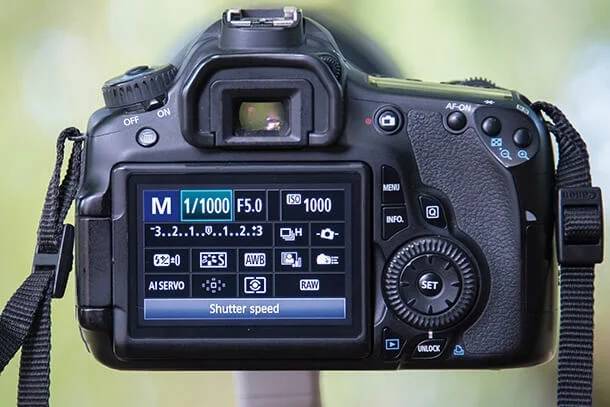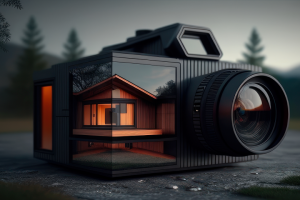The very fact that we have to remind ourselves to ‘never judge a book by its cover’ is proof that we automatically do.
When house hunters scroll through Rightmove, they’re in the process of making one of the biggest decisions of their life. The stakes have never been higher, so if they were ever going to judge a book by its cover, this would be the time.
As a property photographer, you’ve got a lot of responsibility. Even the smallest detail can be the difference between a clickable shot and one that dwindles.
With this in mind, we’re putting the property photography FAQs to a panel of FocalAgent photographers. Joining them is Annie Horne-Peddie, a FocalAgent Business Coach who helps FocalAgent photographers build their freelance businesses by day, and works on her own photography business by night.
What’s the best camera for property photography?
Hennie Wellman, Photographer of the Month, January 2017
“Over the past 10 years, I have used many cameras, including the medium format Hasselblad H5D, plus the Phase One and 35mm digital bodies like the Nikon D300S, Nikon D4, Nikon D700, Nikon D750, Nikon D810E as well as the Canon EOS 5D III and Canon 1DS Mark II.
“I love technology and testing the limits of each camera. In the end, it comes down to speed and ease of use versus resolution.
“Where we have a whole day in the studio with high end products to photograph, we have the luxury of working with much slower medium format systems because the client wants to see the texture, colour accuracy and quality of their product in a handful of frames for publication.

“For property photography, I need to work much faster with the ability to change camera and flash settings in just seconds.
“Lighting conditions can change rapidly even when shooting the same room from different angles so I prefer a 35mm Digital camera body with 12 or 16 megapixels.
“Shooting 24 or even 36 Megapixels is now possible, but most clients will complain that these files are far too big to store and use, so you will have to make every file 50% smaller before uploading which is not ideal.
“Manual settings with a large capacity flash is a must on property shoots to help balance the light and “lift” the room and we are spoiled for choice in this regard with many Nikon, Canon, Fuji and Sony bodies to choose from.”
David Kilburn, FocalAgent Photographer
“Property photography is about capturing the essence of a house, its character and personality; as well as its major selling points. To do this, the right equipment is essential.
“I use a Canon EOS760D which gives great quality in low light conditions & good colour rendition in the highlight & shadow areas. I have my camera set to a Custom White Balance so it records the balance of daylight, interior lighting & flash lighting perfectly.
“Using Automatic White Balance gives inconsistent results as it measures the most prominent colour balance in the shot.
“I favour this particular model as it has a 3inch tiltable touchscreen viewfinder. It is very useful to be able to point the camera in one direction whilst still viewing the image live in the viewfinder & selecting a focusing point.
“I use it when I am trying to get in a corner, or for a low angle shot in a small bathroom or kitchen. It works well for exterior shots of the property should you need hold the camera above your head, to crop out parked cars, etc.
“For me it is not the best camera body or lens, but a combination of camera body, Image stabilized wide angle lens & a variable power flashgun that are the tools required for great property photography.”
Stephen Corbett, Photographer of the Month, February 2017
“The one you have with you!
“No seriously, the weapon of choice must be a full-frame DSLR or full-frame mirrorless.
“I’m not entirely sold on the latter. The Sony A7R2 is a seriously good camera and I know people who use them love the real-time zoom in the viewfinder. But the biggest problem for me with a camera such as this is the battery life and the size of files (they’re 42MP). This is probably an overkill for property photography and would seriously slow down your post-processing.
“Why full frame? It’s down to Dynamic Range and ISO performance, although I know that recently there has been a massive performance improvement of cropped sensor cameras such as the Canon 7D MKII and Nikon D7200.”
Peter Hilton, Photographer of the Month, April 2016
“It’s a personal choice. For my photography, I like the Canon 5D mk 3. Even with the extended battery pack, it’s lighter than my IDX. You’re on the move a lot, so weight matters.

“The picture quality actually comes from the lens, so for new property photographers, it’s better to invest in a good lens than camera body.”
Annie Horne-Peddie, Business Coach to FocalAgent photographers
“I love my trusty Canon 5DMKII. It’s a versatile all-rounder. Mine is actually second hand so I picked up quite cheap; and it’s really good at what it does. I tried the 6D, which is supposedly better; but it just doesn’t give the same rich colours as my 5dMKII.
“The 5DMkII focuses well and has a really good live view function, which I use if I’m stuck in small corners or have to do a pesky high-up shot of the front external.”









